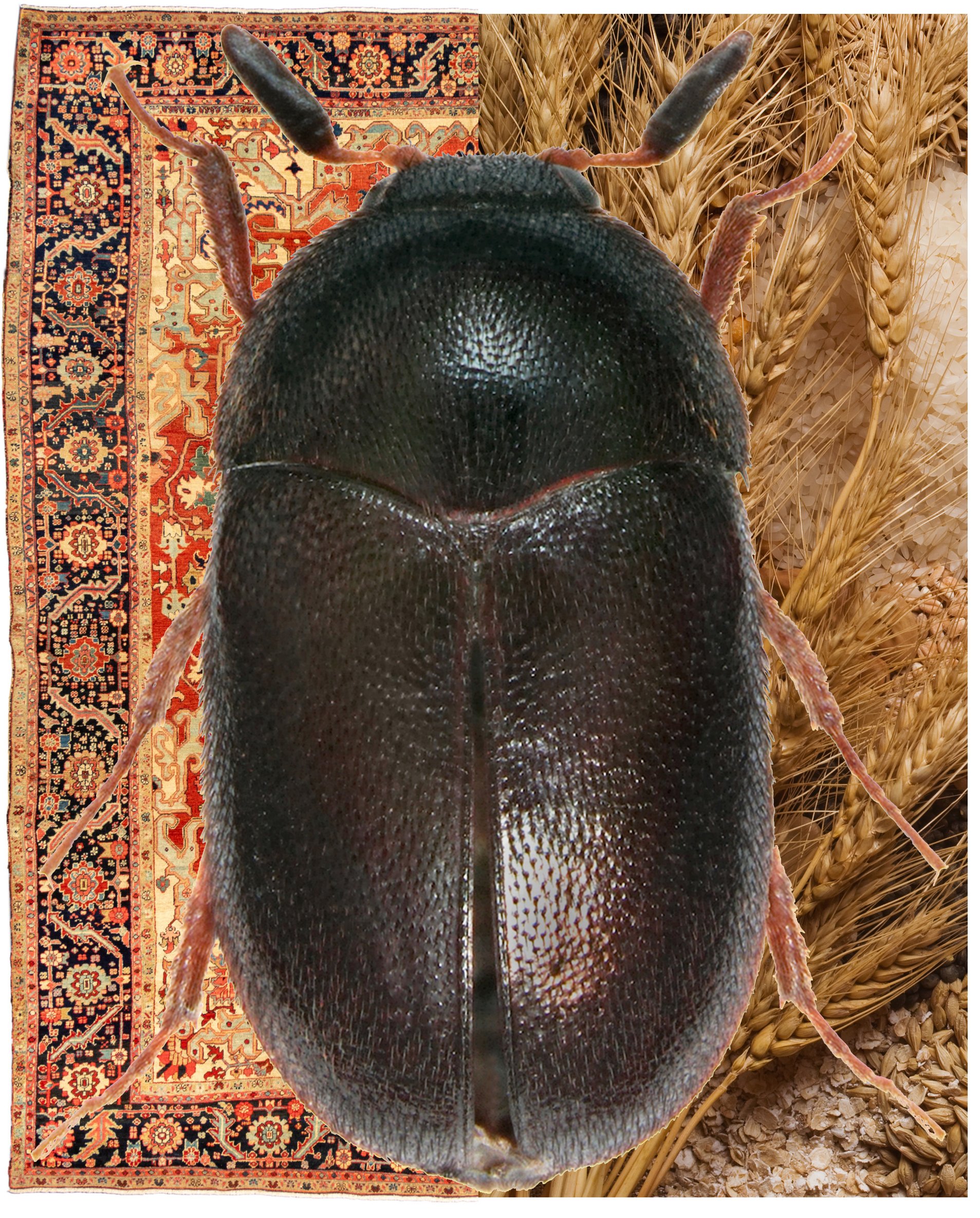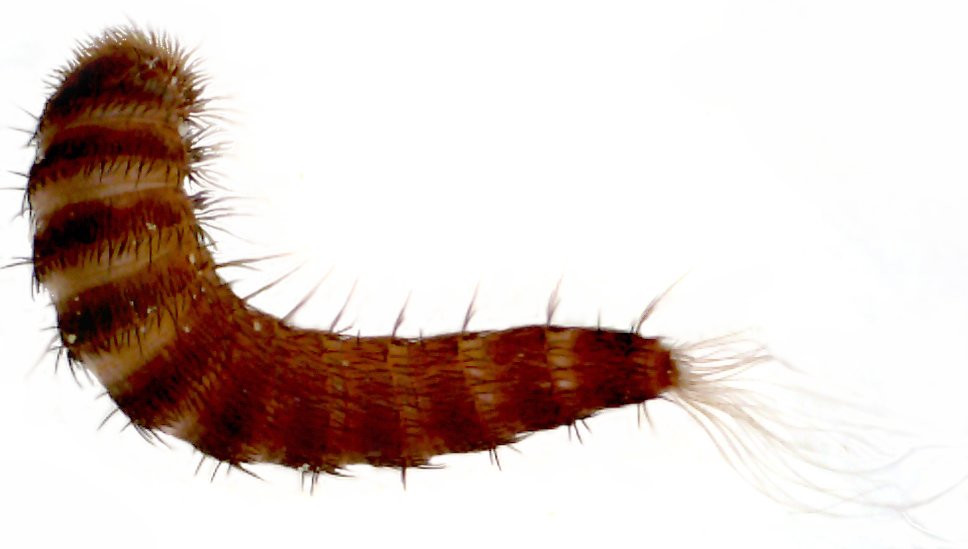Black Carpet Beetle, Attagenus unicolor: A Pest of Carpets and Dried Food
By Pat Kelley, BCE, President of Insects Limited, Inc.
When the common name of an insect includes what it likes to eat, (think clothes moths, flour beetles, saw-toothed grain beetles, etc.) you know that those items are particularly at risk of being eaten by that specific species.
While carpets made from wool are a fond food source for black carpet beetle larvae, carpets are only one menu item in a long list of potential foods for this pest. Somewhat surprising to many is that black carpet beetles are a common pest on grain-based, dried food goods. A 2001 University of California publication on carpet beetles went so far to say that in California and other arid regions, black carpet beetles are a greater stored food pest than they are a textile pest.
Black carpet beetle larvae can feed on either side of the textile/dried food divide, making them difficult to control through food source elimination.
Black carpet beetles have plenty of close relatives that eat animal fibers (wool, feathers, fur, etc.) as well as stored food products containing grains and seeds. Black carpet beetles are a proud member of the insect family Dermestidae. Dermestids are a group of approximately 700 – 1000 species of beetle that includes textile pests such as; varied carpet beetle, Anthrenus verbasci, and furniture carpet beetle, Anthrenus flavipes, as well as food pests such as; warehouse beetle, Trogoderma variable, and khapra beetle, Trogoderma granarium.
Black carpet beetles and varied carpet beetles both, can feed on either side of the textile/dried food divide. This wide variety of acceptable food sources makes them particularly hard to control through food source removal alone.
In an attempt to know our enemy better to assist us in eliminating it, let’s take a look at this insect’s biology. The adult beetles are attracted to sunlight and will feed on the pollen from flowering plants like spirea, crape myrtle, and buckwheat. Outdoor areas around these flowering plants are where the adults typically find a mate. Black carpet beetles exhibit sexual dimorphism, meaning that adult males and females have distinct differences in their appearance. The adult male can be distinguished from the female by looking at the tip of the antennae. The tip of the male’s antenna (see below) is twice as long as the tip of the female’s antenna. The adults range in size from a little less than 3 mm up to 5 mm (1/8 in – 3/16 in) in length. The shiny black or dark brown adults with brownish legs will live for approximately 1 month. Adult females can lay up to ~50 eggs in their adult life span and those eggs will hatch in 6 – 10 days.
Comparison of male and female antenna of the black carpet beetle, Attagenus unicolor
The larval stage is the damaging stage of this insect regardless of if they are feeding on textiles or dried food goods. Adults will only feed on pollen or nectar and do not damage materials. Some of the materials that larvae have been known to feed on are; woolen rugs and other woolen materials, dried animal carcasses, felt, fur, animal hides, debris in bird nests, milk powder, dried peppers, spices, seeds, grains and flour. The carrot-shaped larvae can range in color from light brown to nearly black and can be as long as 13 mm (1/2 in) (See image below). The larvae have a long tuft of hairs that extends away from their tail end which makes them distinct from other dermestid beetle larvae. The larvae will scatter into dark areas when exposed to light.
Copious amounts of shed skins that resemble the live larvae that are deposited on the materials damaged by black carpet beetles makes the job of the pest technician a bit easier when trying to identify what caused the damage.
Black carpet beetle larva with the long tuft of hairs coming off of the tail-end, Photo: P. Kelley
Black carpet beetles and varied carpet beetle adults and larvae can be monitored using Insects Limited’s All Beetle AA Carpet Beetle Kit.
This monitoring kit uses a combination of sex pheromones for the adults and food attractants for adult females looking to lay eggs and for hungry larvae of either sex that are looking for food to eat.
The “AA” in the kit name stands for the carpet beetle’s scientific names of Anthrenus and Attagenus.
Locating the source of this pest beetle with these monitors can help you remove the source and can verify that you have solved the issue after removing the source.
Literature references:
University of California – Pest Notes 2001: https://ucanr.edu/sites/ucrurbanpest/files/238996.pdf
Handbook of Pest Control – Mallis (2011) pp. 701 - 703
Insects Limited, an Insect Pheromone Company
Insects Limited, Inc. researches, tests, develops, manufactures and distributes pheromones and trapping systems for insects in a global marketplace. The highly qualified staff also can assist with consultation, areas of expert witness, training presentations and grant writing.
Insects Limited, Inc. specializes in a unique niche of pest control that provides mainstream products and services to protect stored food, grain, museum collections, tobacco, timber and fiber worldwide. Please take some time to view these products and services in our web store.




